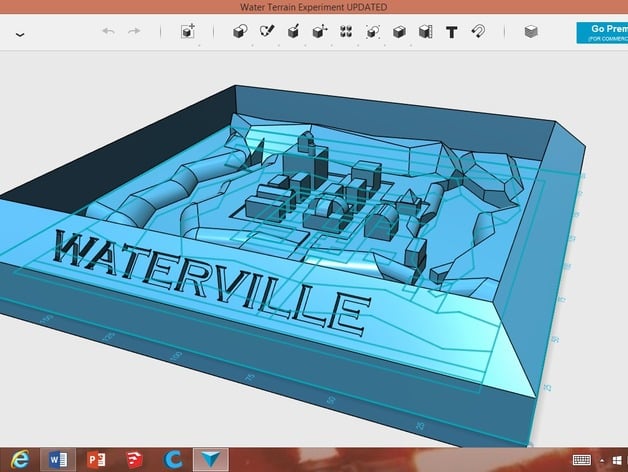
Watershed and Flooding Experiment Diorama
thingiverse
For some teachers, having a watersheds diorama is a fantastic way to either teach budding engineers about the effects of a lot of water or get a janitorial nightmare. Either way, this Flooding and Watershed Diorama can really be an easy benefit to teachers, students, and people who hate cleaning up spills in the classroom! How I Designed This PLEASE READ I used the Google SketchUp CAD software to create the 1st and 2nd 3D models (which was both fun and a pain,) so it may not work for all types of 3D slicing software. I know for sure that the 1st model is quite iffy when it comes to 3D printing because of its complexity, and the 2nd model is probably the same (Sketchup is a bit glitchy.) Always test micro-versions of these models on your printer just to be safe. IMPORTANT UPDATE: The updated model is out and fully printable! I used 123D Design to do this one, so few or no problems. If problems arise, please post them in the comments, and I will do my best to put out updated, upgraded versions. Thanks! Project: Watershed and Flooding Diorama Objectives In this activity, students can learn: -effects of a watershed/Continental Divide -effects of erosion -facts about dikes, dams, and canals -and much more Audiences -any grade (K-12) -any class interested in the engineering behind flood protection Preparations Basically, this diorama can be used for anything a teacher or student can think of for flooding, watersheds or erosion, but I can think of one suggestion that could be used in a classroom studying flood protection engineering. It requires: -a small watering can of water (or more) -a small package of clay (a cup of Play-Dough even) -towels and a bucket for cleanup Steps Either give each student (or group) a small diorama or have a larger, single diorama for the entire class Explain the backstory: "Waterville is in big trouble! As if the irony was not enough, the forecast calls for heavy rain and a large chance for flash floods. With limited supplies and time, the townsfolk need to build a barrier to protect their homes from the flood. Can you save Waterville?" Give each student or group a certain amount of clay or dirt to build a dike to keep Waterville from flooding using the smallest amount of time and clay possible. Test with a "trial by water" to see if the student's separate or cumulative dikes can hold back the "raging flood." For an added or surprise effect, try using a garden hose or water pistol. (Yes, teachers can have fun with this too.) Discuss the outcomes, and repeat if necessary. Results The students should have been able to construct dikes that were able to hold back a sizable amount of water and keep Waterville dry, perhaps with some variety of strategies between students or groups. Teachers can grade students on how well their dikes did compared to the amount of clay they used.
With this file you will be able to print Watershed and Flooding Experiment Diorama with your 3D printer. Click on the button and save the file on your computer to work, edit or customize your design. You can also find more 3D designs for printers on Watershed and Flooding Experiment Diorama.
